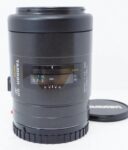Tamron SP 90mm F/2.8 Di Macro [VC] USD F017
Macro lens • Digital era • Discontinued
Abbreviations
| SP | Professional lens with high quality optics and robust build. Meets the highest standards and provides excellent performance and flawless image quality unachievable with traditional optical technologies. |
| DI | The lens is designed for 35mm digital SLR cameras but can be also used on APS-C digital SLR cameras. |
| MACRO | Macro lens. Designed specially for shooting close-ups of small subjects but can be also used in other genres of photography, not necessarily requiring focusing at close distances. Learn more |
| VC | The lens is equipped with Vibration Compensation system. |
| USD | The lens is equipped with Ultrasonic Silent Drive. |
Model history (6)
| ■Tamron SP 90mm F/2.8 Macro 72B [Adaptall-2] • 1:1 | A | 10 - 9 | 0.29m | ⌀55 | 1996 ● | |
| ■Tamron SP AF 90mm F/2.8 Macro 72E • 1:1 | A | 10 - 9 | 0.29m | ⌀55 | 1996 ● | |
| ■Tamron SP AF 90mm F/2.8 Macro 172E • 1:1 | A | 10 - 9 | 0.29m | ⌀55 | 2000 ● | |
| ■Tamron SP AF 90mm F/2.8 Di Macro 272E • 1:1 | A | 10 - 9 | 0.29m | ⌀55 | 2004 ● | |
| Tamron SP AF 90mm F/2.8 Di Macro 272EN II • 1:1 | 2008 ● | |||||
| ■Tamron SP 90mm F/2.8 Di Macro [VC] USD F004 • 1:1 | A | 14 - 11 | 0.30m | ⌀58 | 2012 ● | |
| ■Tamron SP 90mm F/2.8 Di Macro [VC] USD F017 • 1:1 | A | 14 - 11 | 0.30m | ⌀62 | 2016 ● | |
Features highlight




Specification
| Production details: | |
| Announced: | February 2016 |
| Production status: | ● Discontinued |
| Original name: | TAMRON SP 90mm F/2.8 Di MACRO 1:1 VC USD F017 |
| TAMRON SP 90mm F/2.8 Di MACRO 1:1 USD F017 | |
| System: | - |
| Optical design: | |
| Focal length: | 90mm |
| Speed: | F/2.8 |
| Maximum format: | 35mm full frame |
| Mount and Flange focal distance: | Canon EF [44mm] |
| Minolta/Sony A [44.5mm] | |
| Nikon F [46.5mm] | |
| Diagonal angle of view: | 27° |
| Lens construction: | 14 elements in 11 groups |
| 2 XLD, 1 LD | |
| Internal focusing (IF) | |
| Floating element system | |
| On Canon EOS APS-C [1.59x] cameras: | |
| 35mm equivalent focal length: | 143.1mm (in terms of field of view) |
| 35mm equivalent speed: | F/4.5 (in terms of depth of field) |
| Diagonal angle of view: | 17.2° |
| On Sony DSLR-A/SLT-A APS-C [1.53x] cameras: | |
| 35mm equivalent focal length: | 137.7mm (in terms of field of view) |
| 35mm equivalent speed: | F/4.3 (in terms of depth of field) |
| Diagonal angle of view: | 17.8° |
| On Nikon D APS-C [1.53x] cameras: | |
| 35mm equivalent focal length: | 137.7mm (in terms of field of view) |
| 35mm equivalent speed: | F/4.3 (in terms of depth of field) |
| Diagonal angle of view: | 17.8° |
| Diaphragm mechanism: | |
| Diaphragm type: | Automatic |
| Aperture control: | None; the aperture is controlled from the camera |
| Number of blades: | 9 (nine) |
| Focusing: | |
| Closest focusing distance: | 0.3m |
| Closest working distance: | 0.139m |
| Magnification ratio: | 1:1 at the closest focusing distance |
| Focusing modes: | Autofocus, manual focus |
| Autofocus motor: | Ultrasonic Silent Drive |
| Manual focus control: | Focusing ring |
| Focus mode selector: | AF - MF |
| Manual focus override in autofocus mode: | Yes |
| Focusing distance range limiter: | FULL;0.3-0.5;0.5- |
| Vibration Compensation (VC): | |
| Built-in VC: | Canon EF (Yes) |
| Nikon F (Yes) | |
| VC features: | Mode 1 |
| Panning Detection | |
| XY-Shift | |
| VC efficiency: | up to 3.5 stops |
| Physical characteristics: | |
| Weight: | 610g (Canon EF) |
| 600g (Nikon F) | |
| Maximum diameter x Length: | ⌀79×117.1mm (Canon EF) |
| ⌀79×114.6mm (Nikon F) | |
| Weather sealing: | Dust-proof and water-resistant barrel |
| Fluorine coating: | Front element |
| Accessories: | |
| Filters: | Screw-type 62mm |
| Lens hood: | HF017 - Bayonet-type round |
| Teleconverters: | Not compatible |
| Source of data: | |
| Manufacturer's technical data. | |
Compared to the Tamron SP 90mm F/2.8 Di Macro [VC] USD F004
![Tamron SP 90mm F/2.8 Di Macro [VC] USD F017](https://lens-db.com/wp-content/uploads/2016/02/tamron-sp-af-90-28-macro-01-113x150.jpg)
- Advantages: 1
- Disadvantages: 0
- Floating element system
- Slightly less efficient image stabilizer (up to 3.5 stops vs up to 4 stops)
- Slightly heavier (610g vs 550g)
- Fluorine coating
- Larger filter size (62mm vs 58mm)
NOTE: Approximate weight and length were used for comparison purposes.
Manufacturer description
A New Chapter in the Distinguished History of Tamron’s 90mm Macro Lenses
A Legacy of Superior Optical Performance Now Reaches a New Plateau with Enhanced VC Functionality and Advanced Features
The SP 90mm F/2.8 MACRO VC (Model F017) is the most recent release in a successful line of Tamron SP 90mm macro lenses. It redefines the best in advanced features and succeeds a legacy of superior optical performance.
XY-Shift compensation has been newly added to reinforce VC functionality, further improving image stabilization capabilities at any shooting distance from infinity to macro. Advancements in USD control software have also increased AF focusing speed and optimally fine-tuned for various framing conditions. Furthermore, a high standard of Moisture-Proof and Dust-Resistant Construction has been added to prevent intrusion of dust or water droplets. Highly durable, Fluorine Coating is applied to the top element surface and efficiently prevents condensation of moisture and repels smudge-causing substances.
Meticulous craftsmanship is demonstrated in every detail of the exterior design of the newly transformed SP 90mm macro lens. The user can feel it in the exquisitely smooth texture of the metallic barrel.
The lens features an optical construction of 14 elements in 11 groups, including one LD (Low Dispersion) and two XLD (eXtra Low Dispersion) glass elements that in consonance help to control lateral and on-axis chromatic aberrations at a very high level of performance. A Floating System works in tandem with the optical construction to efficiently compensate for inherent aberration changes subject to varying distances. Therefore, this lens ensures seamless and outstanding depictive capabilities across the entire shooting range – close or far.
Flare or ghosting can be detrimental to a decisive shot. A combination of 2 types of coating – eBAND (Extended Bandwidth & Angular-Dependency) layered on top of BBAR (Broad-Band Anti-Reflection) – dramatically improves anti-reflection efficiency to deliver flawless, crystal clear images even against harsh beams of sunlight.
Tamron has maintained a reputable standard for generations of 90mm macro lens models — all the way from manual focus lenses to the current AF models — for their exceptional depictive quality with spectacular bokeh. We also set a high standard to keep pace with the upward migration of digital cameras with advanced technical features and high pixel density.
We have now balanced these polar traits at a higher level: raising resolution performance to a new standard of sharp images, while rendering a soft and smooth transition in gradation of blur-effect in background objects. Optical simulations were thoroughly conducted to realize both well-tuned bokeh effects, while minimizing disturbance in dual-line smear of linear-shaped objects naturally blended into the overall bokeh effect.
The result: the SP 90mm F/2.8 MACRO VC sustains the tradition of excellence in optical design while extending the limit in cutting-edge optical performance and beautiful bokeh.
An accelerometer has been newly integrated into Tamron’s highly accredited VC to compensate for shakes on the x-y plane. The accelerometer in unison with a gyro sensor detects and enables motion compensation for camera shakes for a maximum efficiency in image stabilization optimized for distance ranges from infinity to macro.
The USD (Ultrasonic Silent Drive) control software has been optimized for macro photography with increased focusing speed and positional accuracy when shooting in close-up settings. The AF drive responds rapidly yet quietly to zero in on the photographer’s point of interest and the Manual Focus Override enables instant shift in focus when necessary.
Moisture-Proof and Dust-Resistant Construction has been improved to an exceptionally high standard in lens protection, preventing any intrusion of dirt, dust, or raindrops. A rubber seal protects each switch on the lens and sealing member is applied to the mechanical interface between the focus ring and the lens housing. The new construction further expands opportunities for shooting, ensuring reliability even in harsh, windy conditions and immediately after rainfall.
The optical construction includes one LD (Low Dispersion) glass and two XLD (eXtra Low Dispersion) glass elements, that in consonance, helps to control lateral and on-axis chromatic aberrations at a very high level. While both offer significantly low dispersion characteristics compared to regular glass materials, the XLD provides prominent dispersion properties across the visible spectrum.
A 9-blade diaphragm is configured to retain a smooth, circular-shaped aperture opening even when stopped down by two stops from the wide-open aperture. This produces a smooth-edged bokeh in background light spots and avoids rugged aperture geometry.
eBAND (Extended Bandwidth & Angular-Dependency) Coating and BBAR (Broad-Band Anti-Reflection) Coating work in tandem to achieve exceptional anti-reflection. These technologies enable dramatic cut-off of ghosting and flare when shooting against the sun or under adverse lighting situations to deliver high-fidelity images without inducing noise. eBAND Coating is a nano-structured layer deployed on the lens element surface. In addition to regular anti-reflection coatings, eBAND Coating offers higher transmissivity and significant improvement in anti-reflection characteristics especially against angulated incident rays.
Fluorine coating, originally developed for use in industrial optics applications, has now been applied to the lens to offer long-lasting oil and water repellency. The water-and-oil-repellant coating applied to the front element surface instantly repels dirt or smudges for ease of cleaning and maintenance. The coating is also durable to accompany the photographer on outdoor travels for years to come.
As the shooting distance to the subject is determined, the photographer can choose to manually limit the travel range of the focusing group. This reduces the amount of time that it takes to focus on the targeted subject, making it possible for swift AF operation and preventing a precious photographic moment from slipping away.
With the IF system, the working distance from the front element to the subject does not change during focusing. The distance of 139mm is maintained even during close-ups. This allows the photographer to secure distance away from live, sensitive subjects and to prevent a photographer’s shadow from intruding and disrupting a precious photographic moment.
A USD (Ultrasonic Silent Drive) is used for the AF driving system in the SP 90mm F/2.8 MACRO VC. The integration of a full-time manual focus override mechanism enables a photographer shooting with AF to instantly make fine focusing adjustments with manual focus, without having to switch back and forth between AF and manual focus modes.
Minute objects are projected on the camera’s image sensors at a magnification ratio of 1:1 so that the photographer can enjoy a macro world on print that would otherwise be impossible to experience with the naked eye.
The SP 90mm F/2.8 MACRO VC is a versatile lens that allows the photographer to enjoy shooting in a wide variety of circumstances. The lens can be used particularly for macro photography as well as for portraiture by taking advantage of the fast F/2.8 aperture and remarkable bokeh capability. Photographers can take advantage of the versatility to approach subjects for tabletop photography, as well as to capture distant views for landscape photography with its outstanding resolving power.
Our attention to every engineering detail has yielded the most advanced optical and electro-mechanical design featured in the newest Tamron SP lenses, culminating in a new benchmark for high performance and visual elegance. The design philosophy is based on human touch and is an integral factor in macro photography. The newly designed all-metallic barrel features an embedded concave ring at the base of the lens – for a firm hold and comfort necessary for a steady shot. Switches are larger and reconfigured for smoother torque and the typeface has been redesigned for intuitive legibility.
Travellers' choice
- Fast speed (F/2.8)
- Lightweight (600g)
- Dust-proof and water-resistant barrel
- Fluorine coating on front element
- Vibration Compensation (VC) (Canon EF, Nikon F)
From the editor
The image stabilizer features an accelerometer to correct not only angle but also shift camera shake, which is more pronounced in close-range shooting when a camera moves parallel to the imaging scene. As a result, the image stabilization is optimized for the entire focusing range from infinity to the closest focusing distance. The technology is similar to Hybrid IS of the Canon EF 100mm F/2.8L Macro IS USM lens (2009).
Lenses with similar focal length
Sorted by manufacturer name
Table of contents
Clickable
Pros and cons
- Fast speed
- Internal focusing (IF)
- Floating element system
- Magnification ratio 1:1 at the closest focusing distance
- Ultrasonic Silent Drive
- Focusing distance range limiter (FULL;0.3-0.5;0.5-)
- Manual focus override in autofocus mode
- 9 aperture blades
- Vibration Compensation (VC) (up to 3.5 stops)
- XY-Shift
- Dust-proof and water-resistant barrel
- Fluorine coating
![Tamron SP 90mm F/2.8 Di Macro [VC] USD F017](https://lens-db.com/wp-content/uploads/2016/02/tamron-sp-af-90-28-macro-01-870x1160.jpg)
![Tamron SP 90mm F/2.8 Di Macro [VC] USD F017](https://lens-db.com/wp-content/uploads/2016/02/tamron-sp-af-90-28-macro-02-150x150.jpg)
![Tamron SP 90mm F/2.8 Di Macro [VC] USD F017](https://lens-db.com/wp-content/uploads/2016/02/tamron-sp-af-90-28-macro-03-150x150.jpg)
![Tamron SP 90mm F/2.8 Di Macro [VC] USD F017](https://lens-db.com/wp-content/uploads/2016/02/tamron-sp-af-90-28-macro-04-150x150.jpg)
![Tamron SP 90mm F/2.8 Di Macro [VC] USD F017](https://lens-db.com/wp-content/uploads/2016/02/tamron-sp-af-90-28-macro-06-150x150.jpg)
![Tamron SP 90mm F/2.8 Di Macro [VC] USD F017](https://lens-db.com/wp-content/uploads/2016/02/tamron-sp-af-90-28-macro-07-150x150.jpg)













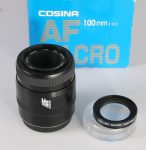
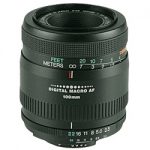
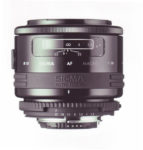

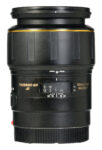
![Tamron SP 90mm F/2.8 Di Macro [VC] USD F004](https://lens-db.com/wp-content/uploads/2012/09/tamron_90macro_vc-96x150.jpg)

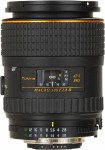
![Tokina AT-X Macro AF 100mm F/2.8 [IF]](https://lens-db.com/wp-content/uploads/2012/09/tokina-m100-01-97x150.jpg)
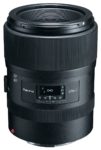
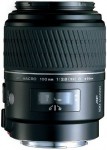


![Sony 100mm F/2.8 Macro [SAL100M28]](https://lens-db.com/wp-content/uploads/2012/07/sony-100-28-01-125x150.jpg)

